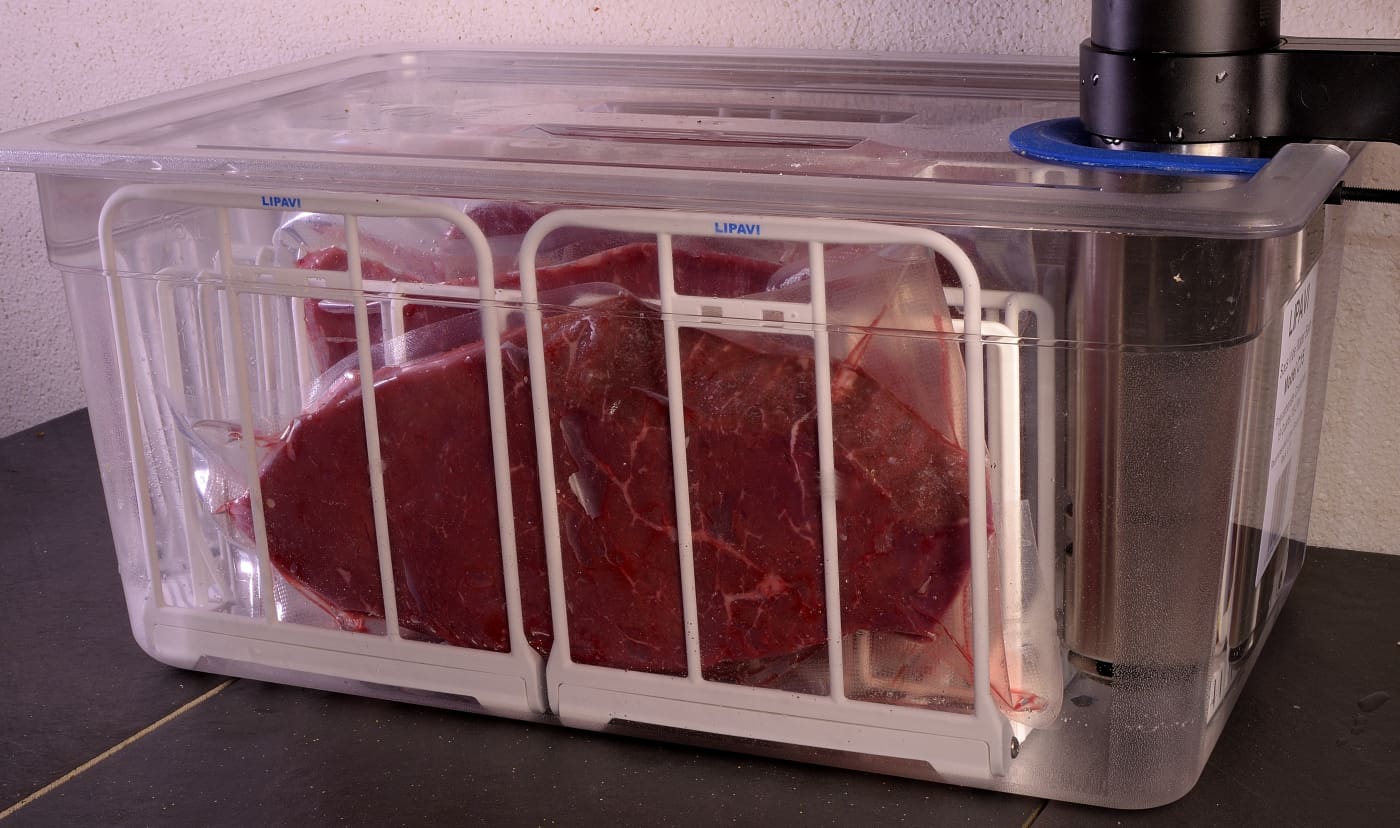
Above: Lipavi C15 container, N15 polycarbonate racks. Lipavi C15L-UNIR lid.
Actual prep time: 2 hours
Level of difficulty: 2.75
Serves 4
Procedure:
Preheat the sous vide bath to 129 F/54 C. Vacuum seal the roast in heat rated plastic, load into a rack and submerge into the bath. A given temperature will always achieve the same appearance of doneness. For a detailed explanation of temperature guidelines, time requirements and appearance of doneness, visit HERE. We wanted a “medium rare” result so we processed at 129 F/54 C. The time parameter (at a given temperature setting) determines the ultimate texture/tenderness of the roast. However, the time requirement to achieve tenderness may vary from steer to steer and even from package to package. We measure tenderness in real time according to the method explained HERE. We expected this roast to be tender after 18 hours, and that’s how it worked out. In other circumstances, up to 24 hours may be required.
Sous vide processing using this time/temperature prescription will pasteurize the roast. The next section explains how to use cold shocking so that the roast can be safely stored for up to two weeks before proceeding to the smoking/finishing steps.
Preservation
Cold shocking is important for several reasons. It prevents the roast from exceeding the original target temperature during the smoking step. It also protects the roast from spending more than four hours in the temperature danger zone. Finally, it protects other foods in the refrigerator from temperature contamination as a result of being exposed to the hot package–refrigerators are not capable of cooling hot food in a safe and timely manner. Once the desired level of tenderness has been achieved, remove the bag from the bath and submerge in iced tap water until the package achieves 70 F/21 C. Refrigerate the sealed package at 40 F/4 C until you are ready to proceed to the next step.
Day of service
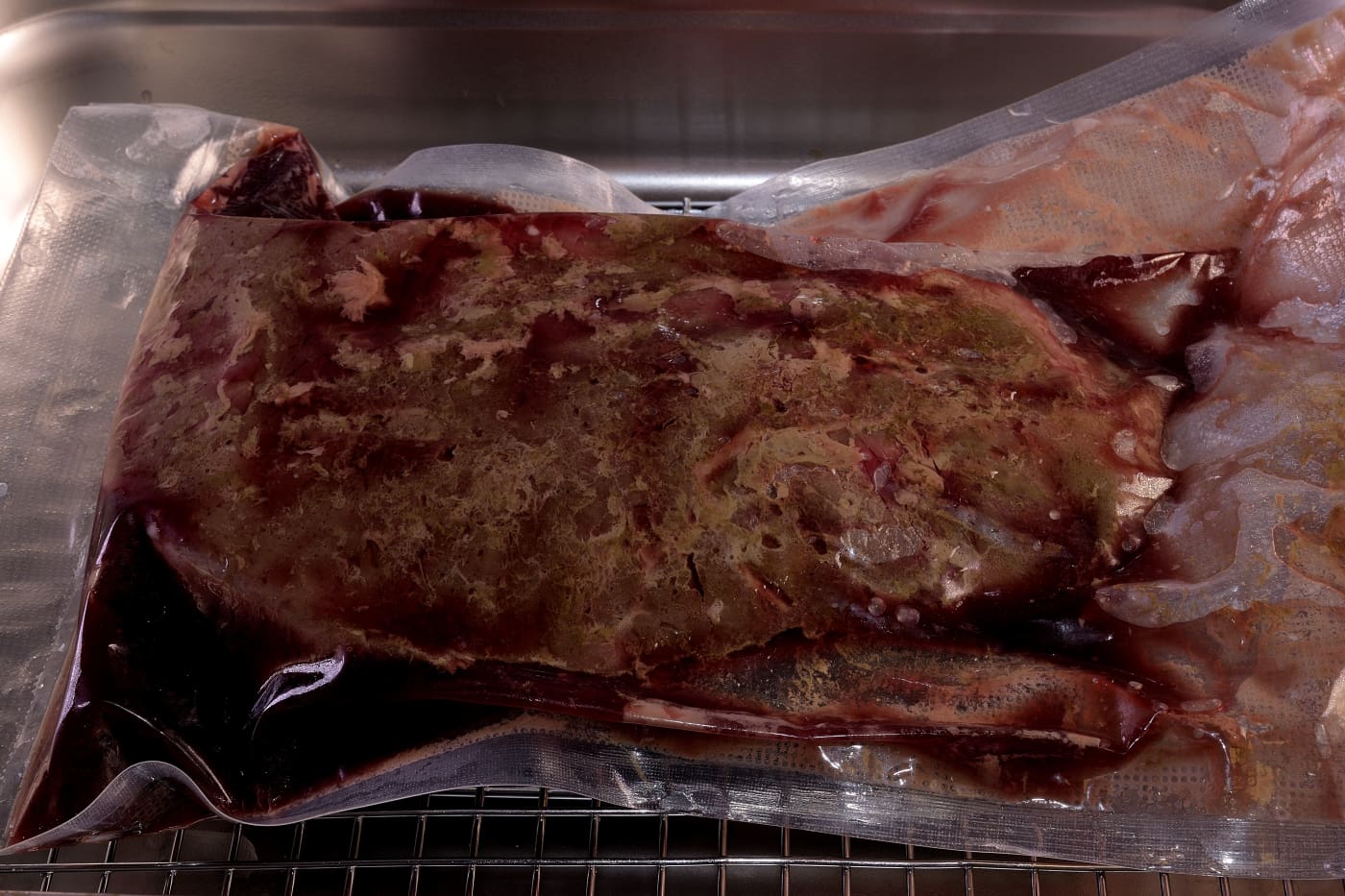
Submerge the package in hot tap water (110 F/43 C) or a working sous vide bath to melt the gel in the package. Remove the roast from the package and set aside the juices.
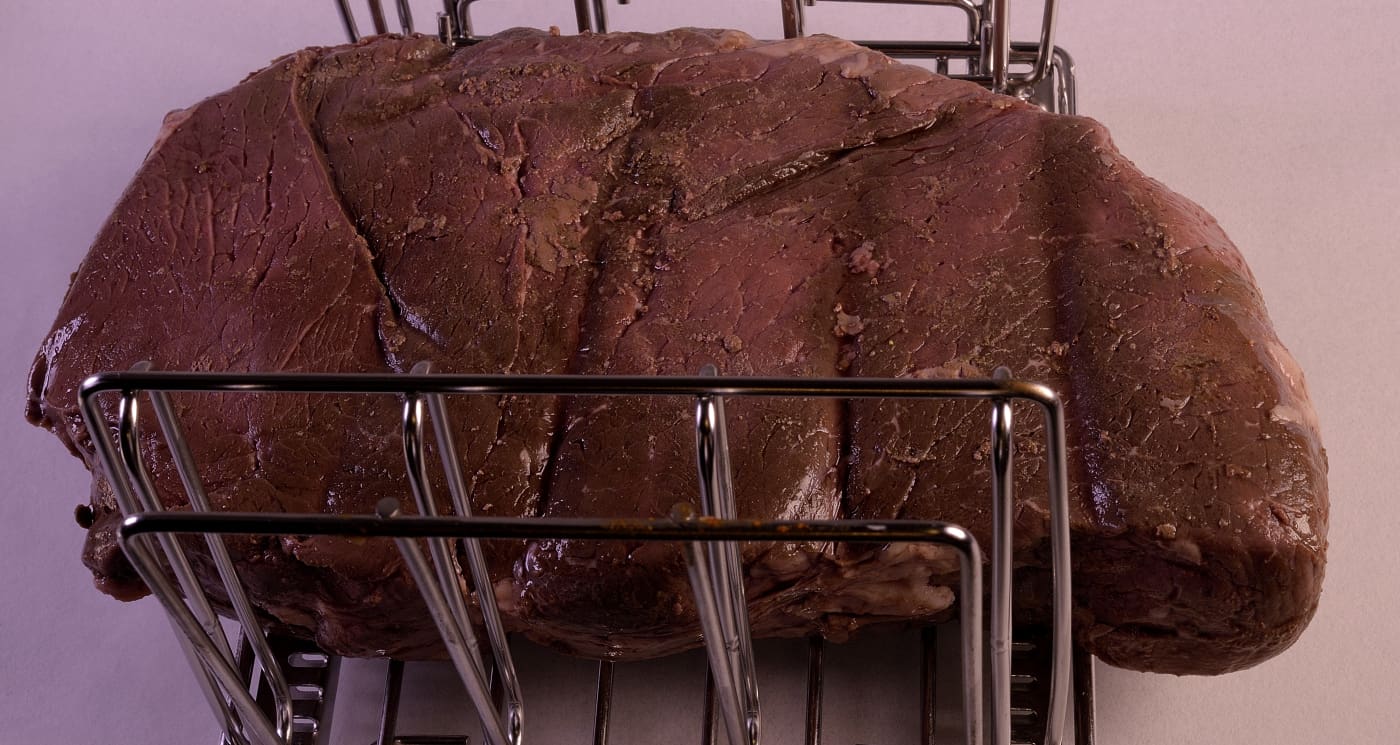
Pat the roast dry and stage onto a rack–we use a marine quality 316L stainless steel Lipavi L10 rack; rust proof, dishwasher proof and smoker/oven proof. Clarify the juices according to the procedure explained HERE–they can be used to make the brisk barbecue sauce or in any savory recipe that calls for stock or water.
Meating expectations
Raw meat is coated with viscous albuminoids that help seasonings to adhere. Exposure to heat denatures the albumins, so we will use powdered (or fresh) egg whites to restore the adhesive surface. This will give the seasoning/crust something to cling to.
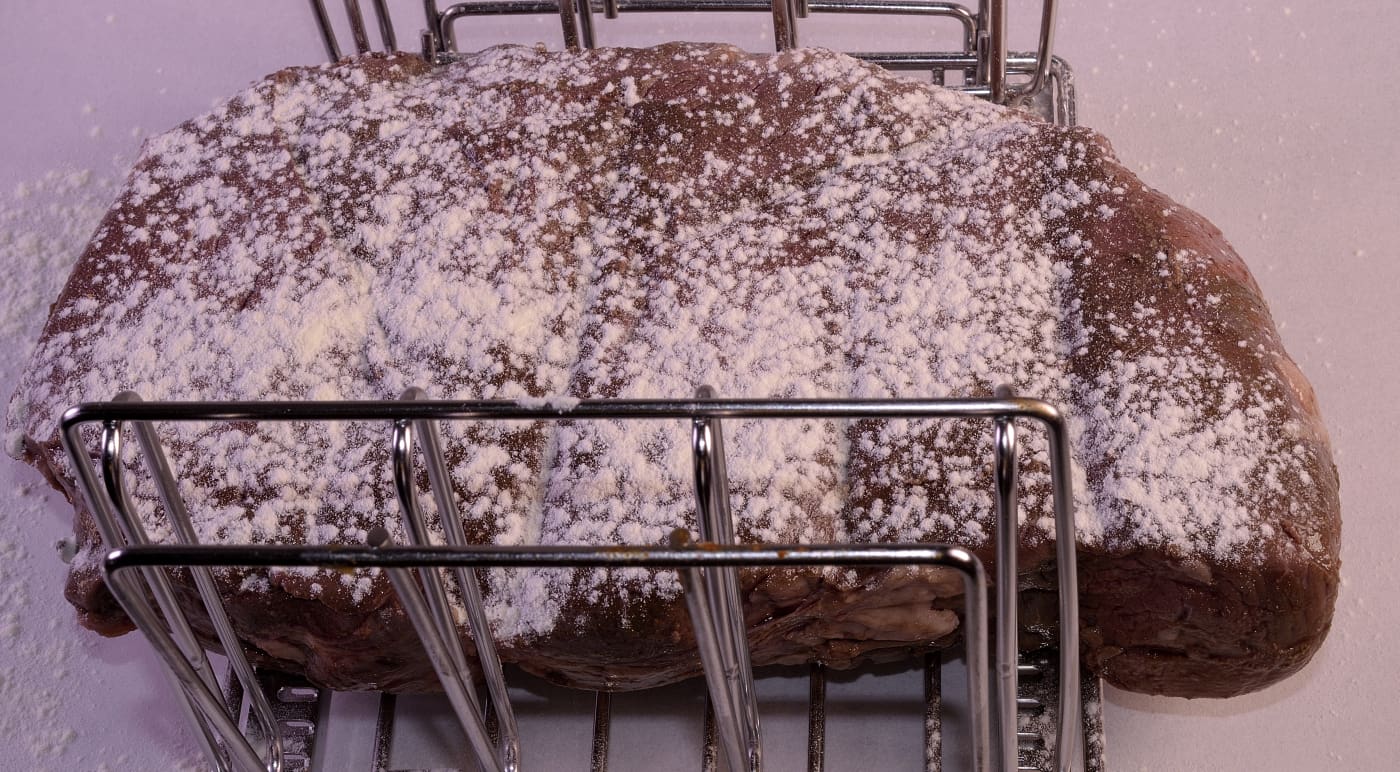
Use a dredge/shaker to sprinkle the surface with powdered egg whites. A fresh egg white beaten with an equal amount of water will achieve the same result–apply sparingly.
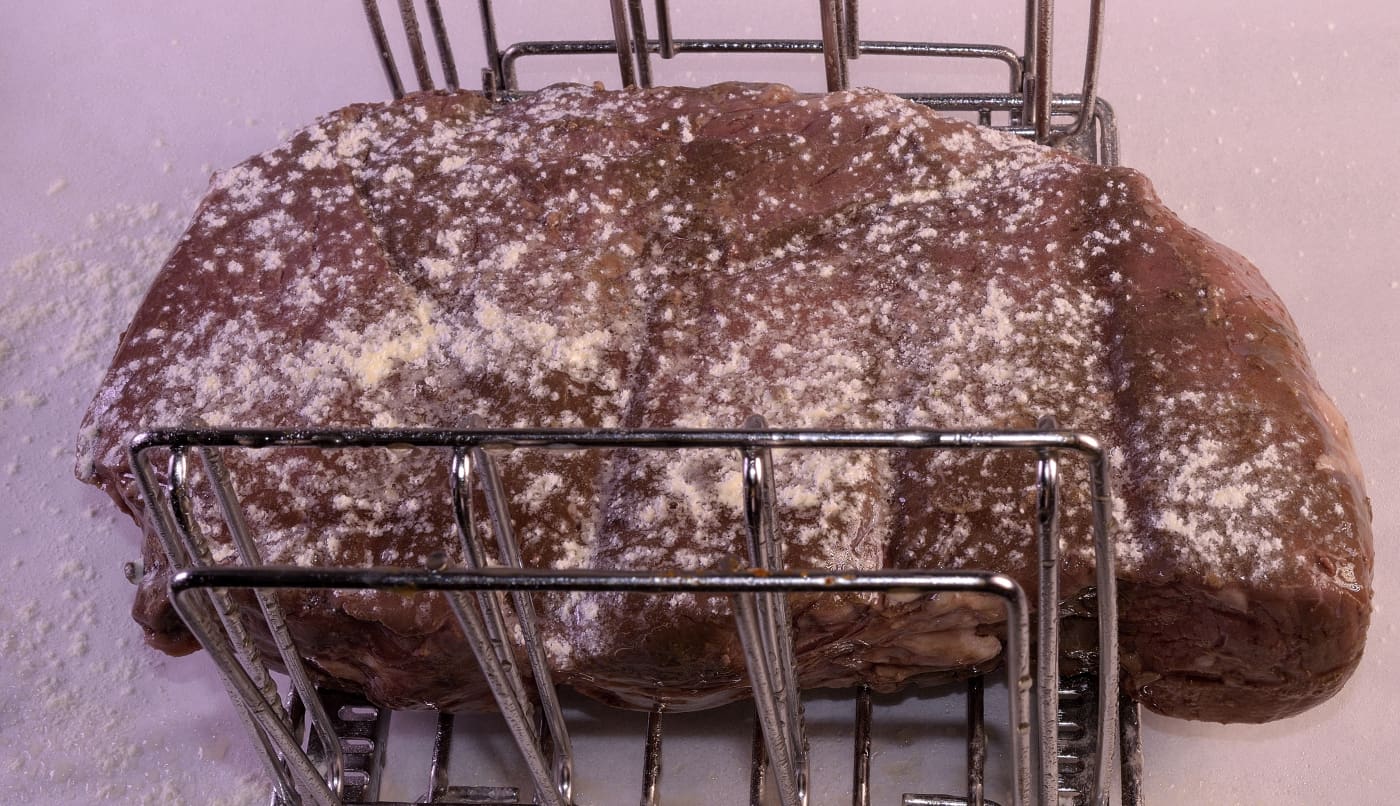
Use a spray bottle filled with water to dissolve the powdered egg white–skip this step if you are using fresh egg white.

Sprinkle with your choice of seasonings. Today’s version was simply kosher salt, sweet paprika, hot paprika and home dried parsley.
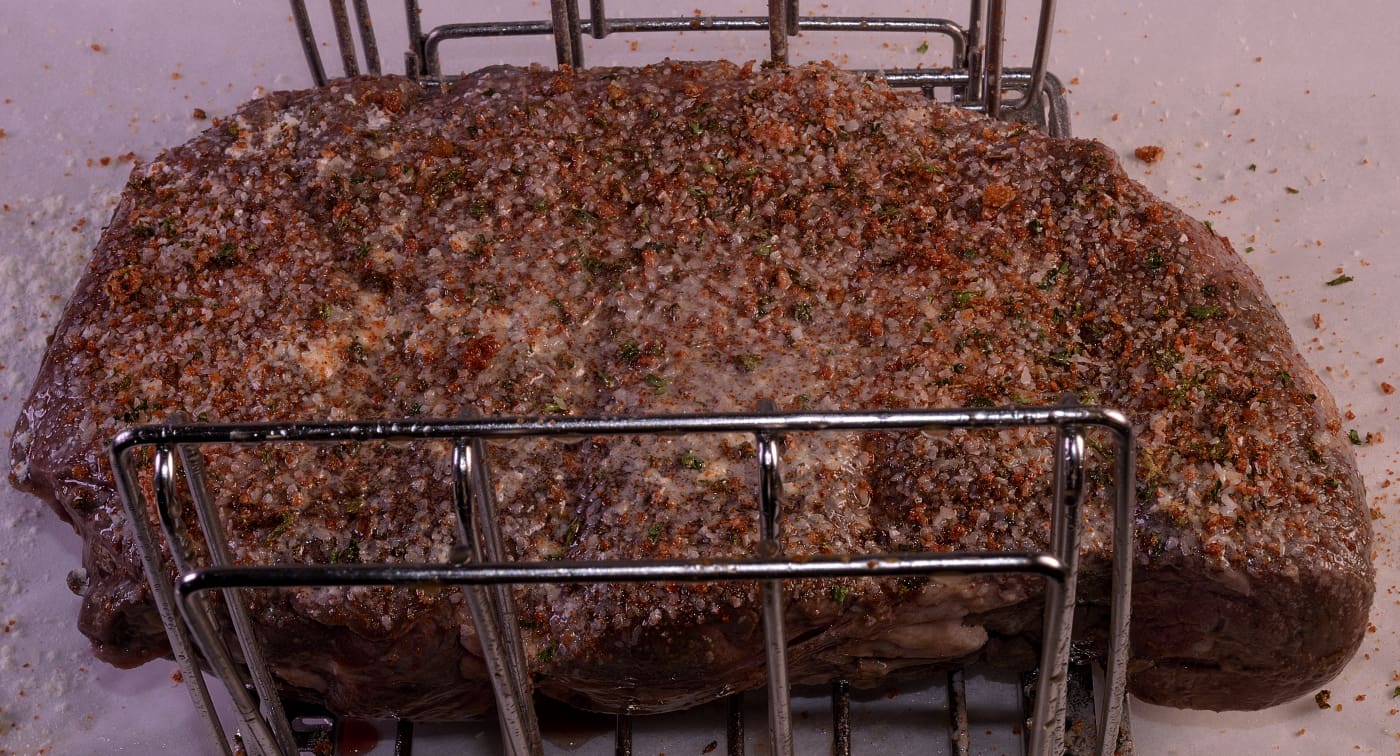
Mist with spray release or drizzle with oil.
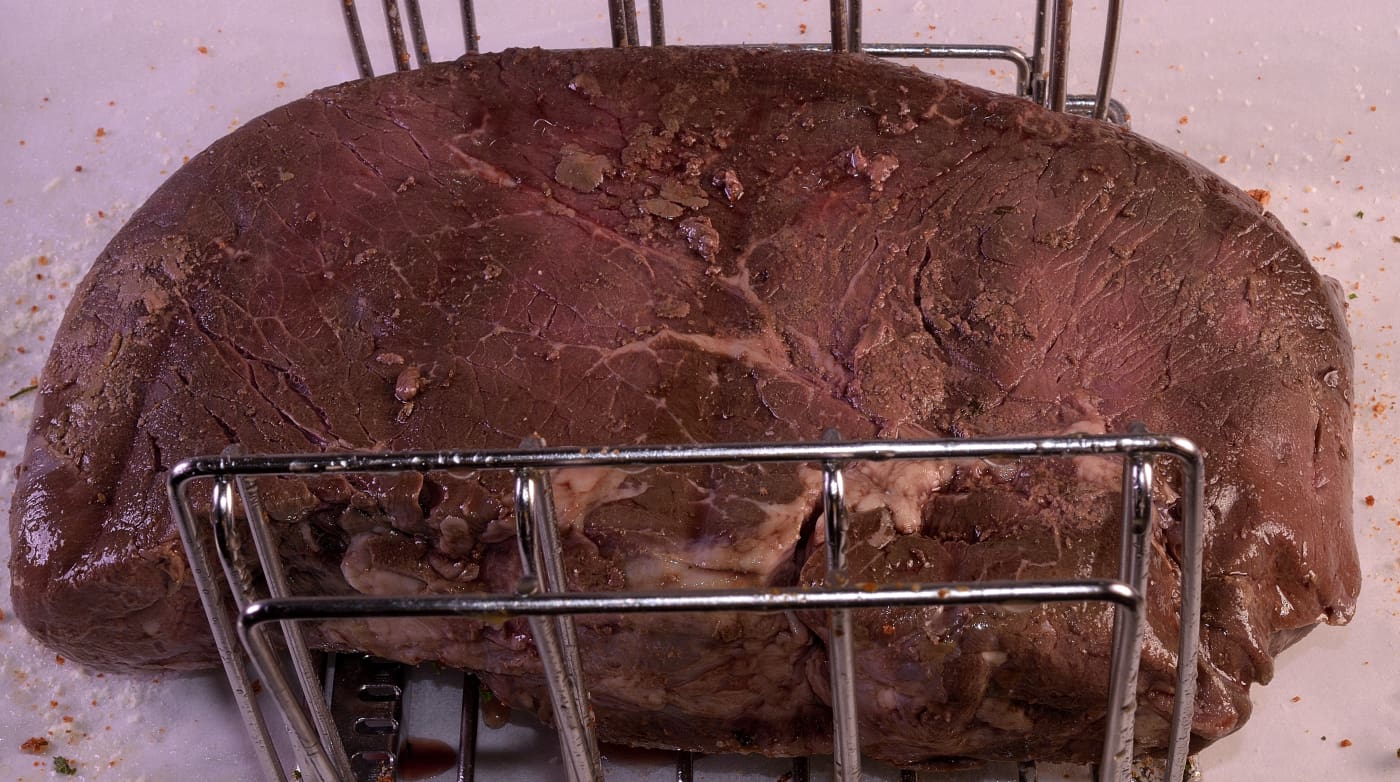
Turn the roast over and repeat the seasoning process.
Set your smoker between 180 F/80 C and 225 F/107 C. We use a PID driven pellet grill, but any back yard smoker will suffice. The lower the temperature utilized, the more smoke flavor will be realized.
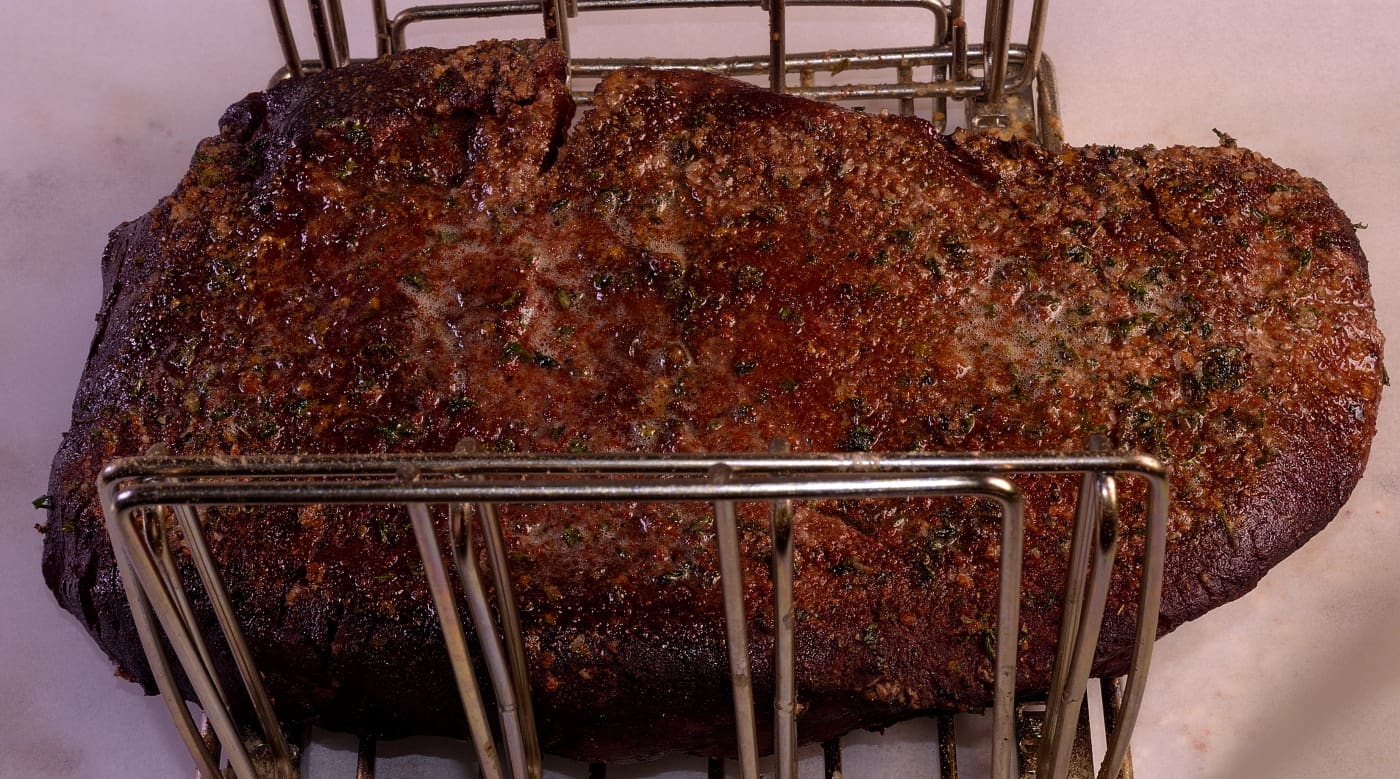
Smoke the roast until it has achieved the desired appearance and an internal temperature of at least 125 F/52 C (mouth hot). While you wait for the roast, make the shaved broccoli salad (optional).
No, those are not noodles.
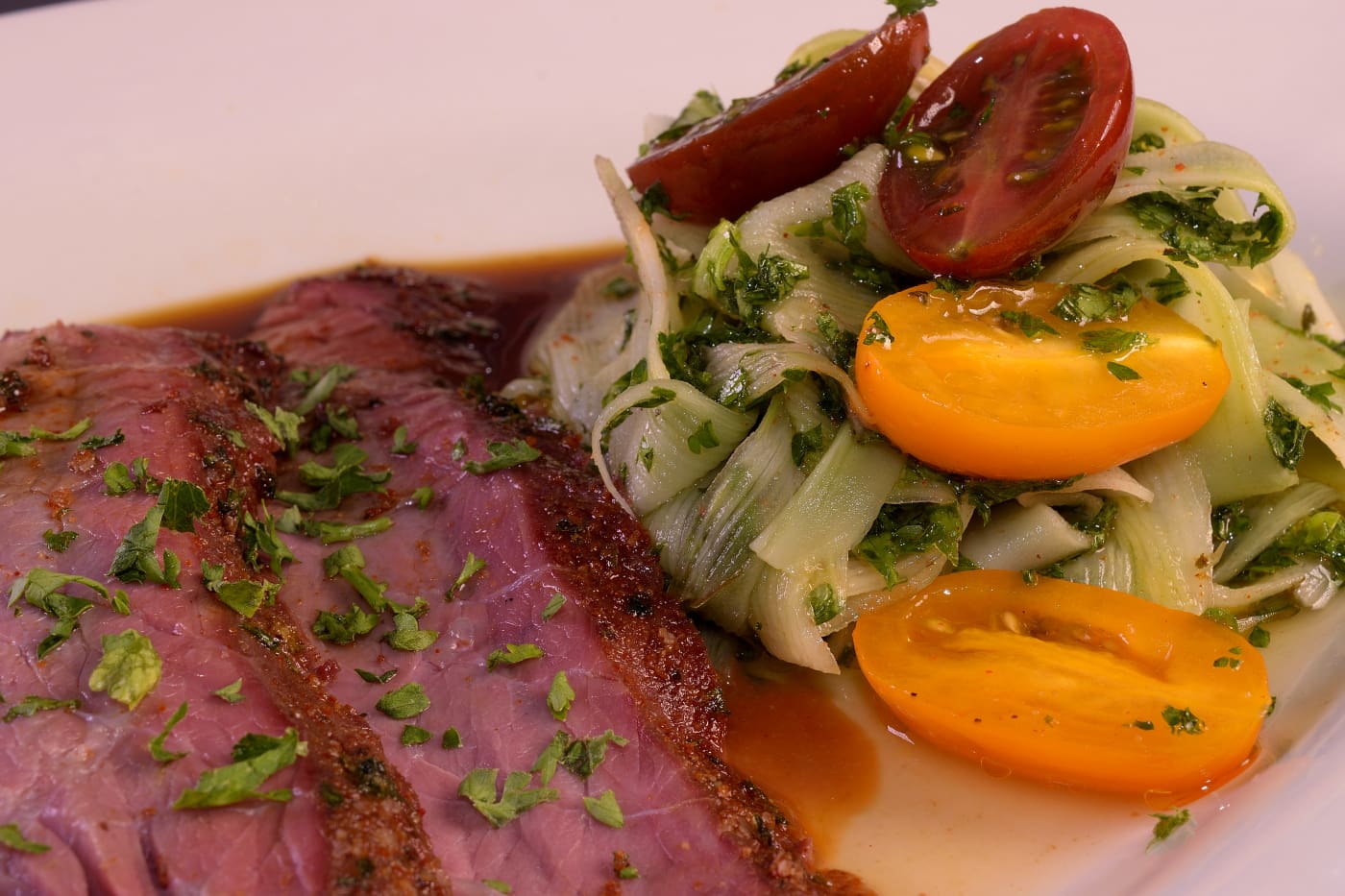
Use a paring knife to remove the tough outer skin of the broccoli stem. A vegetable peeler or mandolin can be used to cut paper thin slices. Toss with your favorite seasonings, chopped parsley and enough extra virgin olive oil to coat. Top with grape tomatoes. Add a few drops of lemon juice just before service so as not to discolor the parsley.
Finishing and Service
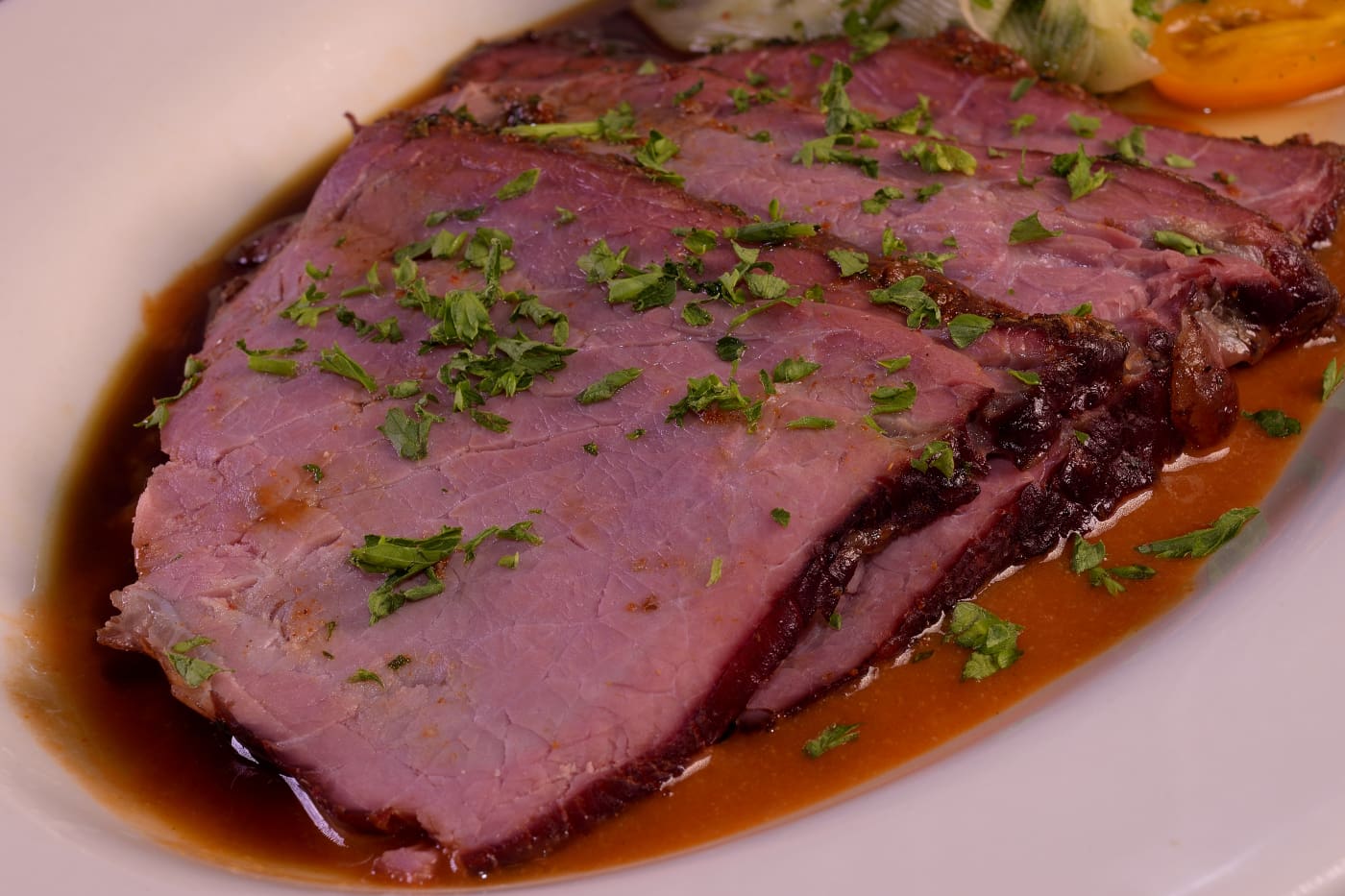
Drizzle the bottom of the plate with a little barbecue sauce.
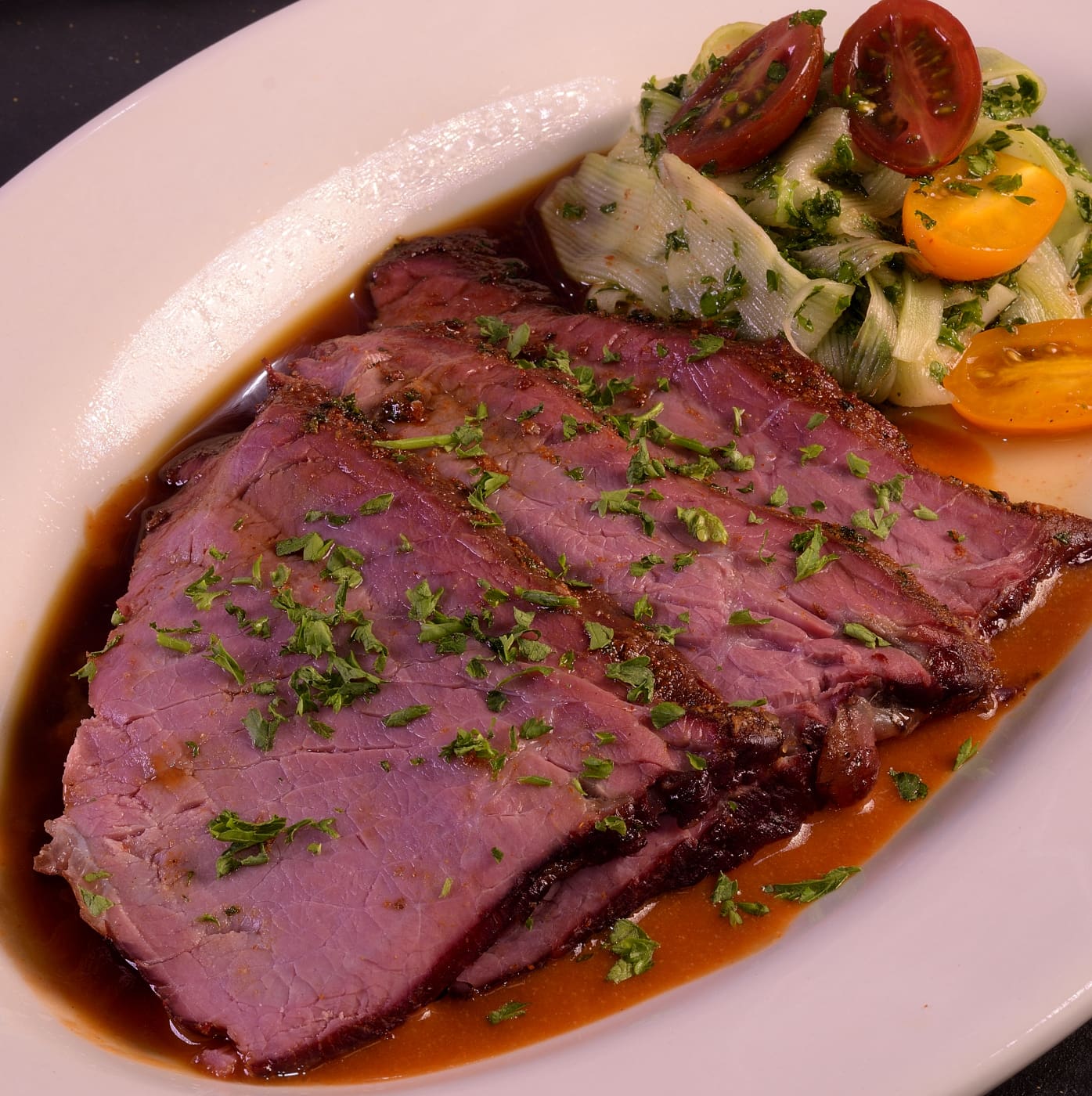
Shingle the beef from the salad towards the front edge.
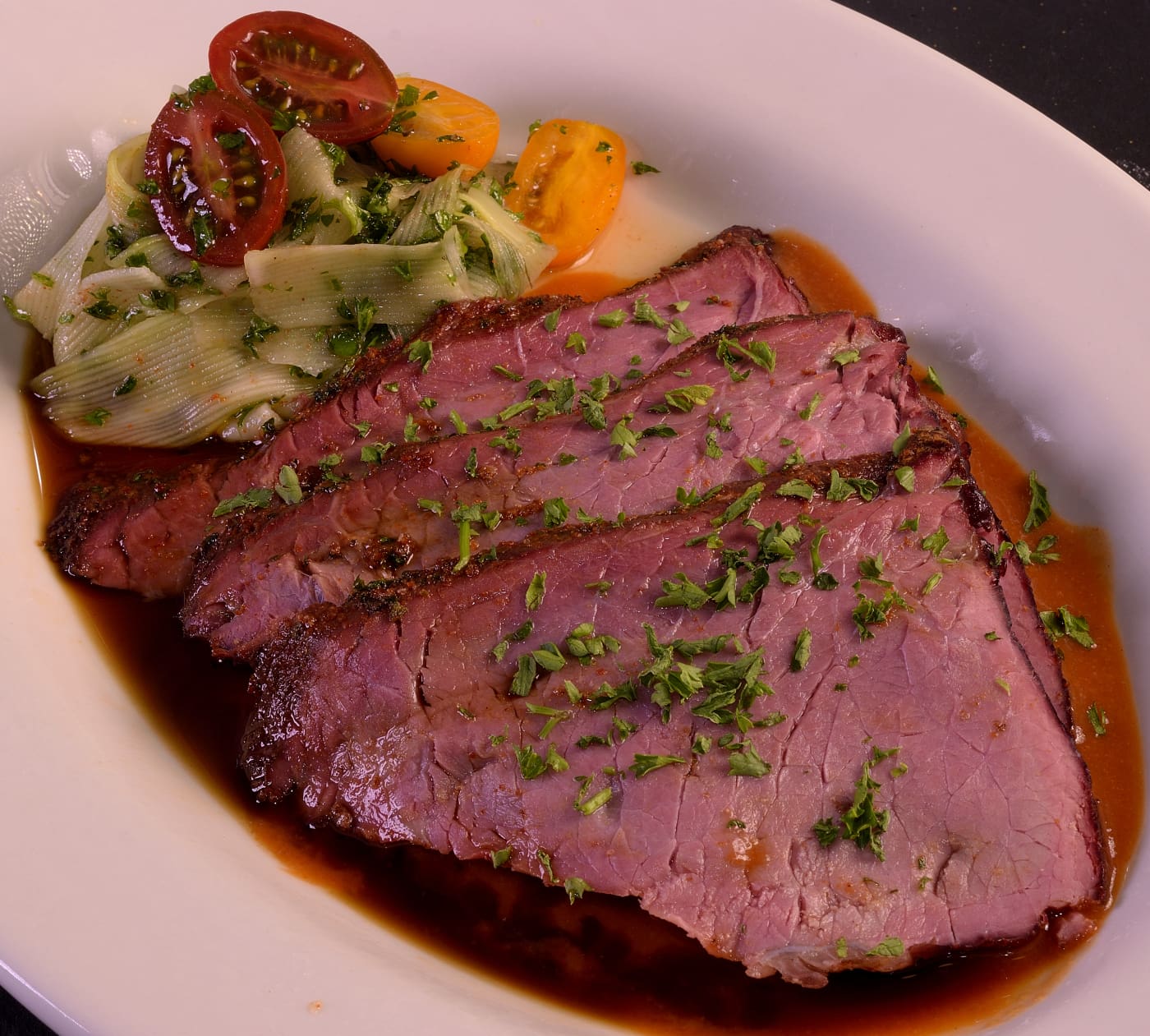
Norm
Visit us on Facebook at SVR–Sous Vide Resources; Low Temperature Pasteurization, Sous-B-Q™
